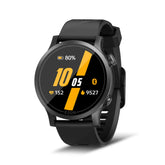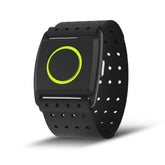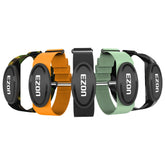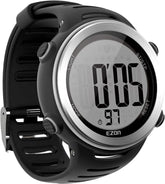Sleep Cycle Optimization: How Watches Help Athletes Recover Faster
Athletic performance hinges on more than just training—it’s deeply rooted in quality sleep. Sleep tracking watches equipped with advanced sleep analysis tools decode sleep cycle graphs, enabling athletes to maximize deep sleep duration, refine bedtime routines, and supercharge recovery training. This guide reveals how sleep data transforms rest into a performance enhancer.
1. The Science of Sleep and Athletic Recovery
A. The 4 Sleep Stages and Their Roles
| Stage | Percentage of Night | Key Benefits for Athletes |
|---|---|---|
| Light Sleep | 50–60% | Mental processing, transition to deep sleep |
| Deep Sleep | 15–25% | Muscle repair, growth hormone release |
| REM Sleep | 20–25% | Cognitive recovery, memory consolidation |
| Wakefulness | <5% | Normal part of sleep architecture |
B. Why Deep Sleep Is Critical
- Growth Hormone (GH) Surge: 70% of daily GH release occurs during deep sleep, essential for muscle fiber repair and fat metabolism.
- Performance Link: Athletes who achieve 20%+ deep sleep show 30% faster recovery from high-intensity training (study, Journal of Sports Medicine).
2. Decoding Sleep Cycle Graphs with Watches
A. Key Metrics for Athletes
- Sleep Efficiency: Time asleep vs. time in bed (aim for >85%).
- Stage Distribution: Monitor deep sleep percentage—use sleep cycle graphs to track weekly trends (e.g., “Deep sleep dropped 5% after a hard training block”).
- Resting Heart Rate (RHR): A rise in RHR signals poor recovery—correlate with sleep data to adjust training loads.
B. Watch Technology Breakdown
- Sensor Fusion: Combination of accelerometry, heart rate, and temperature sensors to identify sleep stages.
- AI Analysis: Watches like the EZON Sleep Pro use machine learning to predict optimal bedtime windows based on your sleep cycle graph.
3. Bedtime Routines: Customizing for Deep Sleep
A. Science-Backed Pre-Sleep Habits
-
Temperature Regulation:
- Take a warm shower (38°C) 90 minutes before bed to induce a post-shower core temperature drop, promoting sleep onset.
-
Light Management:
- Wear blue light-blocking glasses post-6 PM and use watch-guided “night mode” to suppress melatonin disruption.
B. Watch-Guided Sleep Rituals
- Guided Breathing: Activate watch-led 4-7-8 breathing exercises (inhale 4s, hold 7s, exhale 8s) to lower heart rate by 10–15 BPM.
- Bedtime Alerts: Program watches to send reminders 30 minutes before your optimal bedtime (calculated from sleep cycle data).
4. Deep Sleep Optimization Strategies
A. Training-Sleep Sync
- Post-Workout Timing: Finish intense training at least 3 hours before bed to avoid elevated core temperature disrupting deep sleep.
- HRV-Driven Recovery: If morning HRV is low (<40), schedule a nap (20–30 minutes) to boost deep sleep debt repayment.
B. Environment Fine-Tuning
-
Sleep Hygiene Checklist:
- Keep bedroom temperature at 18–20°C
- Use blackout curtains and white noise machines
- Remove electronics (except sleep-tracking watches in flight mode)
5. Recovery Training Adjustments Based on Sleep Data
A. Sleep-Poor Training Modifications
-
If Deep Sleep <15%:
- Swap high-intensity intervals (Zone 4–5) for Zone 2 endurance work (60–70% MHR).
- Add 10-minute restorative yoga sessions post-workout to lower cortisol.
B. Pre-Competition Sleep Strategy
-
3 Nights Before Event:
- Extend sleep by 1 hour/night, prioritizing REM sleep for cognitive sharpness.
- Use watch alarms to wake during light sleep windows (30-minute pre-target wake window) to minimize grogginess.
6. Common Sleep Optimization Mistakes
-
Inconsistent Bedtimes:
- Solution: Maintain bedtime within 30 minutes of the same time daily, even on weekends—use watch reminders to build consistency.
-
Overtraining on Low Sleep Days:
- Solution: Link training apps with sleep data to auto-suggest modified workouts when sleep quality is poor.
-
Neglecting Sleep Environment:
- Solution: Use watch-integrated environmental sensors (if available) to monitor room conditions and make real-time adjustments.
7. FAQs: Your Sleep Optimization Questions Answered
Q: How much sleep do athletes need?
- 7–9 hours/night for most; endurance athletes may require 9–10 hours to support muscle repair.
Q: Can napping replace lost night sleep?
- Short naps (20–30 minutes) improve alertness but don’t fully replace deep sleep. Use watch alarms to avoid “sleep inertia” from longer naps.
Q: Best watch features for sleep optimization?
- Prioritize sleep tracking watches with HRV analysis, sleep staging, and smart alarm functionality (e.g., EZON Sleep Pro Series).
Transform Sleep from Rest to Recovery
By leveraging sleep tracking watches and sleep cycle graphs, athletes turn sleep from passive rest into active recovery. Use data to refine bedtime routines, prioritize deep sleep, and align training with your body’s natural repair rhythms.
Remember, the starting line of your next PR begins in the bedroom. Sleep smart, recover faster, and let data-driven rest be your secret weapon for peak performance.
EZON Watch: Professional Sleep Tracking for Athletes
https://ezonwatch.com
https://ezonwatch.com









